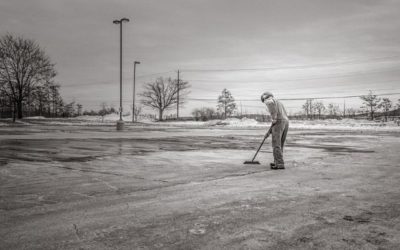MASTERING SOCIAL PROCUREMENT
During 2016, I was asked to do an article for the Master Builders Association of New South Wales on social procurement and how to master social procurement under the NSW Aboriginal Participation in Construction (APIC) Policy. The policy would have been updated but the principles around social procurement included in the article, remain valid. I am grateful to Omesh Jethwani and the MBA for the opportunity to share my views on the steps that can be taken to increase Aboriginal opportunities in training, employment and business not only in the building and construction industry, but industry overall.
The post has been updated and revised but a copy of the original article can be found here.
Mastering Social Procurement: Aboriginal Participation in Construction
“It takes 10,000 hours to become a master at something”
Malcolm Gladwell
We often forget that it takes time, the courage to fail, persistence and leadership to master anything new. Ten thousand hours in working days equal about 4 years.
Becoming masters in Aboriginal participation will not be an overnight story.
It takes time to achieve the outcomes of enabling Aboriginal people to actively influence and fully participate in social, economic and cultural life.
As the business community, we have a key role to play to directly broaden opportunities for Aboriginal training, employment and business and indirectly influence an increase in school attendance and retention.
Social Procurement is similar to a Construction Project
Mastering social procurement is no different to mastering a building or construction project.
You do have to start with what you want to achieve, where you want to get in the end.
Social procurement requires you to:
- plan,
- design,
- pilot,
- build and
- review your social procurement requirements
in the same way as you manage any construction or building project.
Construction and building projects always have deadlines.
Seldom ever do you have the luxury of 10,000 hours to become a master.
You are slave to delivering your project safely, on time, on budget and to the specification. When a project is delayed, it is always the contractor’s fault.
But….. we all know that not everything in a project is critical path. Much can be done outside of the high risk and critical path areas.
How to master social procurement?
The following 5 steps are recommended to assist with social procurement:
-
Plan
The outcome from your planning will be the development of an Aboriginal Participation Plan (APP) or Reconciliation Action Plan. However, I would like to stress the importance of engaging with the right partners long before any project commences. When we engage with Aboriginal partners we must be willing to actively listen and earn trust.
Did you know that there are more than 580 NSW registered building and construction suppliers registered on SupplyNation – and they have previous experience? There is another 50 vendors registered without experience. The 580 vendors do not include any ancillary vendors that can provide the low hanging procurement fruit such as warehouse personnel, rags, office products, PPE and stationary. Many different Aboriginal vendors register with SupplyNation.
-
Design
Similar to any project, you will work through the different options available. It needs to consider the pathways (yes, this is a journey not a once-off contract requirement) to increase Aboriginal opportunities for:
- training;
- employment; and
- the provision of services and goods.
It works to start with including experienced Aboriginal companies in the process but it is easy enough to start with non-critical path areas.
The social procurement process will take more time and will require a different mindset and different way of contracting. Therefore it will need to be included in the design process.

-
Pilot
The building and construction industry knows and applies the concept of piloting well. A pilot project provides the opportunity to test, evaluate and redesign. It fits perfectly in social procurement.
Work on a pilot scale, test and evaluate and be prepared to redesign. Don’t stop at the pilot and realise that as the journey progresses that the pilots will become larger.
-
Build
The goals allow business to start small and grow their social procurement. It is an ongoing process. Social procurement is a social investment. Similar to any investment, it takes time, nurturing and sometimes it will have to change direction.
It is important to think as a visionary but keep your feet on the grounded and remain real and practical; taking one step at a time forward aiming towards where you want to get to in the end.
-
Review
Rome was not build in a day. Yet Rome became an empire.
Why did Rome fall?
The Caesars lost sight of the end.
The process of review and learning lessons is a key part of a successful project and to measure how we are going towards achieving our goals and mastering social procurement.
It is also a good time to celebrate success.
The more we find reason to celebrate the successes, even small ones, the more we will encourage those who need just that extra little nudge to be able to participate.
Social procurement creates an opportunity to build a bridge between Aboriginal and non-Aboriginal people.
I respectfully leave you with Elder Nelson’s words:
“No one accepts being told what to do, what is going to happen to their families, homes – land and water, cultural sites of significance, or how to live your life. So it is important to engage with community, including leaders, Elders and the community people themselves.”
Good luck with your journey to master the steps required to increase opportunities for delivering positive social procurement outcomes.
Please contact us if you have any questions.





